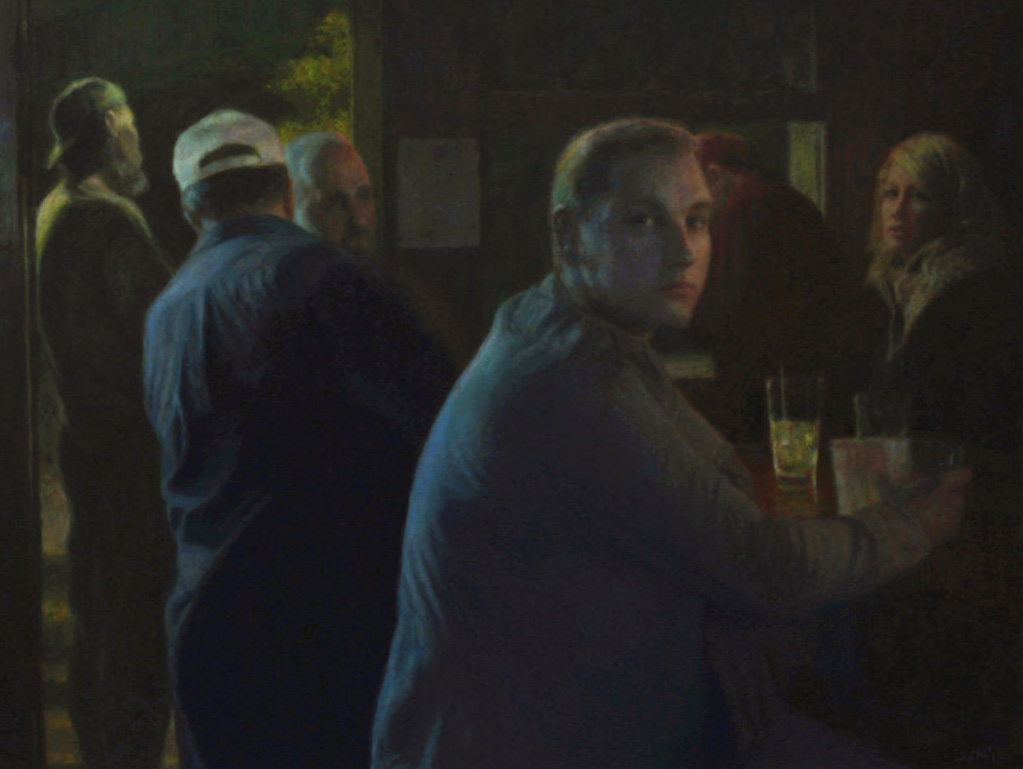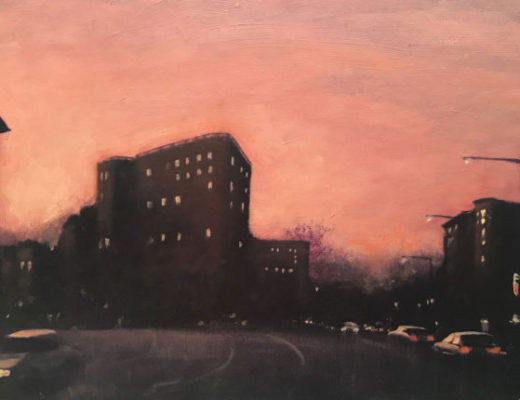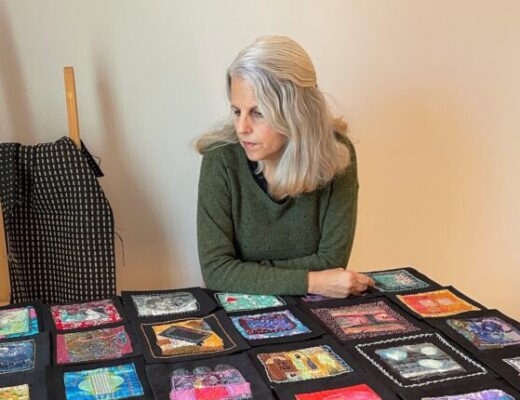by Jason Williams
This article was first published in The Northwest Current.
The tall bronze figures that puncture the quiet upper Northwest neighborhood of Shepherd Park signal that this space is much more than a residence. As you pull up to the Zenith Gallery, you are greeted by one of two sculpture gardens to this reclaimed artistic repository.
Margery Goldberg’s Zenith Gallery has been a D.C. arts staple for nearly 40 years. Goldberg’s keen eye for sculptures and studio art can be seen across the city, as she is curator for one location in downtown D.C. and another at 1429 Iris St. NW. At the Iris Street location, a new exhibit that opened last month focuses on one of art’s community longest and most productive movements: realism.
If you are thinking of the cliché of a room full of painters trying to re-create a bowl of fruit or a semi-nude model, yes, that is realism — but, no, that is not what is on full display at this exciting new exhibit. “What’s Real to You?,” which will be in place through May 12, features artists Davis Morton, Ron Schwerin and Gavin Sewell moving the known to a new level of study.
Morton, Schwerin and Sewell all bring different vantage points to their works and evoke vastly different responses. The interplay between their work is muted because it is displayed alongside the rest of Goldberg’s current collection, but with some careful guidance, the tangential connections among the three artists come more into plain view.
One of the ways Sewell’s work differs is his incorporation of mixed media. There is a metallic, nearly golden finish on many of the works he has displayed. All conformed to a traditional canvas, the two-dimensional objects give the works a depth and texture that is difficult to create otherwise.
Sewell’s take on realism is farther out on the spectrum than his peers’ views: Yes, these are objects we know, but his treatment of them demands we look at them in different ways. One example you should see for yourself is Sewell’s “Five Thousand Opinions.” The base is a $100 bill. Somewhat obscured by well-placed overlays is Ben Franklin’s gaze; at the top and bottom corners, cutouts reveal machinelike interworking below the surface. The suggestion that our currency is a tool and a part of a bigger machine is inescapable. Yet with all the details, you are drawn back time and again to Franklin’s eyes — a familiar image that now seems much more calculating.
There is a similar arresting glare in Morton’s “The Stranger.” If a singular trait runs through the displayed work of Davis Morton, it is the incredible use of shadow and muted tones. Morton captures people and often pairs them with treasured companions to show their shared connection. In “The Stranger,” however, there is a mirror-like connection between yourself and the painting. The scene is a bar, where several patrons — rather than enjoying their drinks — seem to be engulfed by items that have drawn their attention in several different directions. At the rear of the oil painting, a few people are looking out the door; as you move closer, the bar’s only female guest is looking to the left. Then at the center of the image, a single decently dressed man stares straight into where the viewer would be standing. Neither friendly nor fearful, his expression leads you to imagine that a beat later he would turn his head back to either his drink or whatever it is that has captured the consideration of everyone else at this pub.
Last are the works of Ron Schwerin, who is more in the wheelhouse of traditional realism. Schwerin has re-created oil paintings of people in various stages of dress, and the exhibit also features his textbook arrangements of fruit and vegetables. Still, Schwerin is able to capture the vibrancy of everyday objects and the vulnerability of human subjects.
In “Cindy on Green Drape,” you first see the nude but tastefully covered model, and then details of the work; the shimmer of her golden bracelets, the delicateness of the hair raining down her neck, and the nearly-matching brown hues of the sofa, her hair, and brow. The painting can be taken in as a conversation starter or just enjoyed for the merits of its execution. Once again it reminds of the familiar but pulls the audience for a deeper look.
All of the works are up for sale. Already framed, the prices range from $950 to $12,000.





No Comments